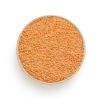The Captivating History and Tradition of Egyptian Koshari
Koshari, Egypt’s beloved national dish, is a vibrant reflection of the country’s history, culture, and culinary ingenuity. This humble yet flavorful meal has enchanted locals and travelers alike, becoming a symbol of Egyptian hospitality and resilience. Let’s dive into the fascinating origins and traditions surrounding this iconic dish.
The Origins: A Culinary Melting Pot
Koshari’s roots trace back to the late 19th century, a time when Egypt was a bustling trade hub. The dish is a testament to the country’s multicultural influences, blending ingredients and techniques from various cuisines. The lentils and rice come from India, the tomato sauce hints at Italian influence, and the fried onions and chickpeas reflect Middle Eastern flavors. This unique combination embodies Egypt’s openness to diversity and adaptation.
From the Streets to the Heart of Egypt
Koshari gained prominence as a street food, served from bustling carts in Cairo’s vibrant neighborhoods. Vendors perfected the art of layering flavors, creating a dish that’s as satisfying to the palate as it is to the soul. Over time, it transitioned from street fare to a cherished home-cooked meal, cementing its place in Egyptian households.
The Perfect Blend of Ingredients
The magic of koshari lies in its harmonious blend of textures and flavors:
- Base: A mix of rice, lentils, and macaroni.
- Toppings: Crispy fried onions, chickpeas, and a zesty tomato sauce.
- Optional Spices: A tangy vinegar-garlic dressing and a fiery chili sauce for those who crave heat. This layering of ingredients creates a symphony of flavors, each bite telling a story of its rich heritage.
A Dish Steeped in Tradition
Koshari is more than just a meal; it’s a ritual. Families gather to prepare it together, creating bonds and passing down recipes through generations. Its affordability and nourishing qualities make it a staple during celebrations, religious fasts, and everyday meals. Sharing koshari symbolizes unity and generosity, key pillars of Egyptian culture.
Koshari’s Role in Modern Egypt
Today, koshari remains a culinary ambassador of Egypt. From upscale restaurants to humble street vendors, it continues to represent the nation’s ingenuity and hospitality. Foodies around the globe seek out koshari, intrigued by its unique medley of flavors and history.
Experience Koshari: A Journey Through Taste
Tasting koshari is like embarking on a sensory journey through Egypt’s vibrant history. Whether you savor it in a bustling Cairo market or recreate it in your own kitchen, this dish invites you to connect with the essence of Egyptian culture.
In every bowl of koshari lies a story—a story of resilience, creativity, and the enduring spirit of Egypt. Next time you dig into this flavorful feast, remember that you’re partaking in a tradition that’s as rich and complex as the dish itself.
Discover Traditional Egyptian Recipes Discover Traditional Recipes from Asia You may like this also: Korean Jeonju Bibimbap
Egyptian Koshari
Ingredients
Instructions
-
Cut the onions into slices, sprinkle them with flour and salt. Fry in hot oil until golden and crispy.
-
Boil the chickpeas that you soaked the night before in a pot filled with water. Strain the boiled chickpeas into a deep bowl, do not throw away the remaining water. Add 1 teaspoon of chopped garlic, salt and cumin to the drained chickpeas.
-
Boil the pasta and drain. Take 2 tablespoons of the oil in which you fried the onions, pour it over your pasta and mix well. This process will prevent the pasta from sticking.
-
Boil the green lentils that you have soaked for half an hour in a pot filled with water. After straining the boiled lentils, add cumin and 3 crushed garlic cloves and mix.
-
Take a sufficient amount of the remaining oil and fry the noodles in this oil. Wash the rice thoroughly with water. Add rice on top of the roasted noodles. At this stage, add salt and cumin to your rice.
-
Fry 1 tablespoon of salt and chopped garlic with two tablespoons of oil. Add tomato puree and salt and continue cooking until it thickens.
-
Separate 3 cups of the water in which you boiled the chickpeas and reserved them before. Add 1 tablespoon of chopped garlic and 1 lemon juice. After boiling for 1 minute, remove from the stove.
-
Reserve half of the sauce you prepared. Add 1 teaspoon of hot sauce to the reserved sauce and boil for another minute.
-
Preparation for Service
Now it's time for the service stage, which is the most important point of Kosheri. Place the rice at the bottom of the serving plate and half of the green lentils you prepared on top. -
Then add the pasta and half of the green lentils, respectively. Sprinkle the boiled chickpeas over the lentils.
-
Divide the chickpea boiling water in half and pour as much of the sauce you want over the Kosher.
-
Place the tomato sauce and lastly the crispy onions on top of the Kosher. If you wish, drizzle the hot sauce you have prepared on top.
-
Kosher with high nutritional value is ready to serve. Bon Appetit!














